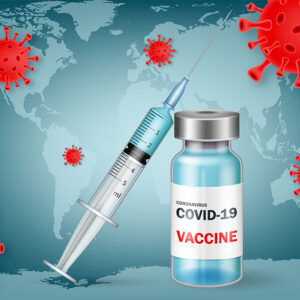The White House recently announced it has likely exhausted funding for a potential fourth COVID-19 vaccine dose for all Americans. The Washington Post reported in March that “the Biden administration lacks the funds to purchase a potential fourth coronavirus vaccine dose for everyone, even as other countries place their own orders and potentially move ahead of the United States in line.”
It has not been long since numerous news reports indicated there were extra doses of vaccines that could be accessed with medical ingenuity. Politico reported that “pharmacists have found a way to squeeze extra doses out of vials of Pfizer’s vaccine,” while The New York Times reported, “As boxes of Pfizer vaccines began arriving around the country this week, hospital pharmacists made a surprising discovery: Some of the glass vials that are supposed to hold five doses contained enough for a sixth — or even a seventh — person.”
In addition to these reports, it is not unusual for leftover vaccine and other injectable medicine to remain inside syringes after they’ve been delivered. With nearly two years of delivering vaccine to prevent COVID, the U.S. government has all but ignored an American innovation that could have solved this oversight and perhaps even have avoided the crisis today.
Had the government mandated the use of ultra-low-waste technology at the outbreak of the pandemic through today we would have 200 million extra doses for global use with no additional cost for the vaccine. Instead of efficiency, the doses that ended up getting wasted were thrown away with each inefficient injection. If we want injectable drug prices to go down, it makes sense to use the best technology.
It should be incumbent on the Centers for Medicare & Medicaid Services to mandate taxpayer money be used to buy products made by American companies to safely deliver vaccine. Especially if those American products not only deliver exactly the doses needed at a cost savings to the patient but also protects frontline workers from accidental needle sticks. A great example of the dichotomy between cheap and inefficient imported syringes and American made ones can be found in Sharps Technology Inc.
This American company is producing ultra-low-waste safety syringes, while our medical system is administering doses in low-quality products that originate from Russia and China. These cheap imports both waste medicine and put healthcare workers at risk. While imported syringes lead to massive waste, the Sharps technology is innovative in a way that could have saved the taxpayers potentially billions had they been used during the pandemic.
But even now, it is critical that CMS take heed and adjust for the future new technologies that are are delivering critical medicine in a highly specific dosage. A specificity that could also be a means to lower the cost of injectable medicines.
It makes sense for CMS to promulgate regulations that favor American syringes and other medical devices to avoid the use of inferior imported devices. Taxpayers have been increasingly footing the bill for Americans medical care during the COVID-19 pandemic. Healthcare spending has increased dramatically over the last few years and government money flowing to healthcare is increasing. The CMS estimates that “U.S. healthcare spending grew 9.7 percent in 2020, reaching $4.1 trillion, or $12,530 per person.”
When you dig into the CMS numbers, you find that “retail spending for other non-durable medical products, such as over-the-counter medicines, medical instruments and surgical dressings, increased 5.7 percent to $85.7 billion in 2020 compared to a rate of 4.7 percent in 2019.” Spending on retail prescription drugs was $348.4 billion. Although most of that spending was out-of-pocket, the share of government spending was still in the billions.
Another benefit of using American safety syringe technology is the safety benefits to hospitals and savings. If Congress mandated that taxpayer cash be used for safety syringes, then there would be savings on the back end with less infected medical workers and less loss of work time for healthcare employees worried about needle stick injuries that cause incredible medical complication among those on the front lines.
The bottom line is that the government needs to better serve the taxpayer, and using American technology will bring both better health care and savings for the taxpayer. It is well past time for government to implement policies that result in American superior made medical device technology being used to the exclusion of cheap imported versions.

